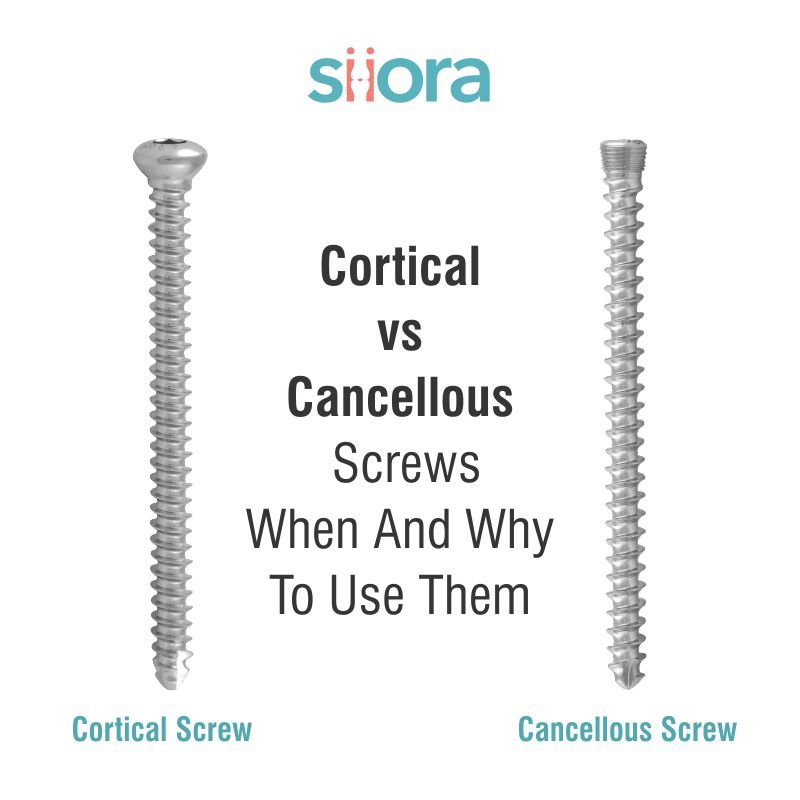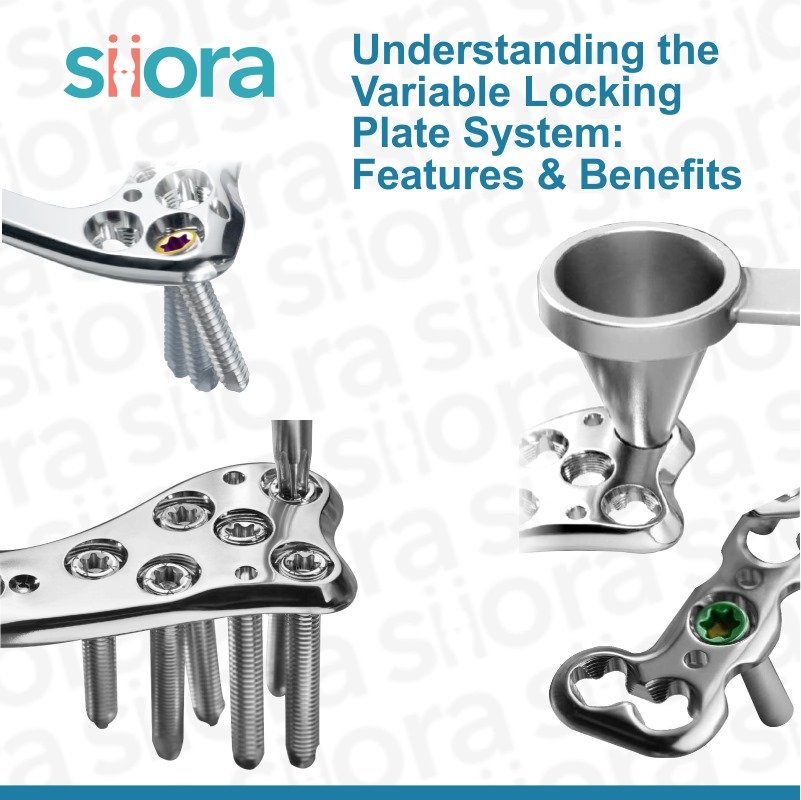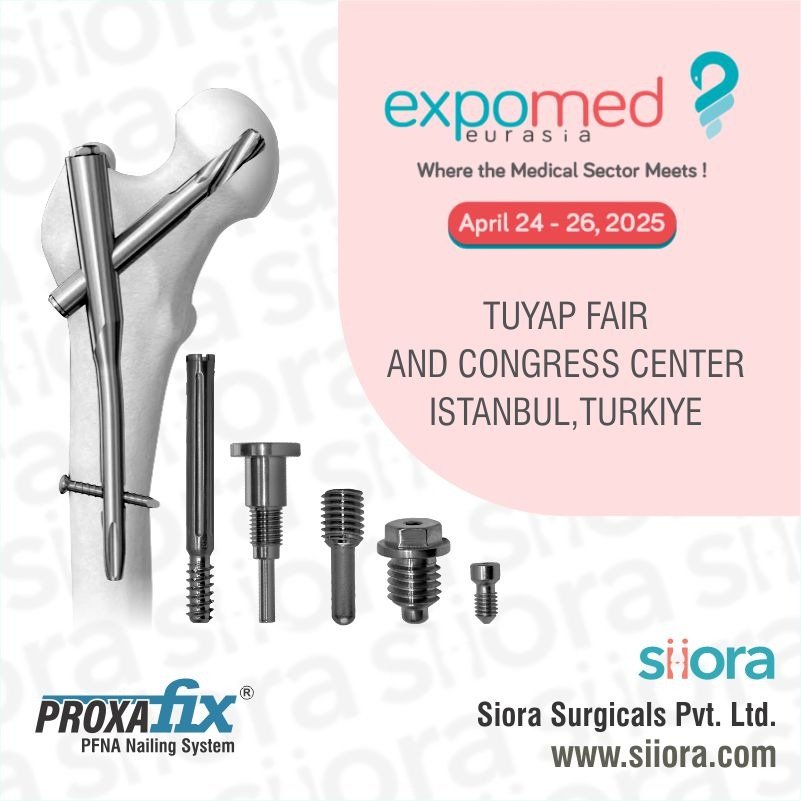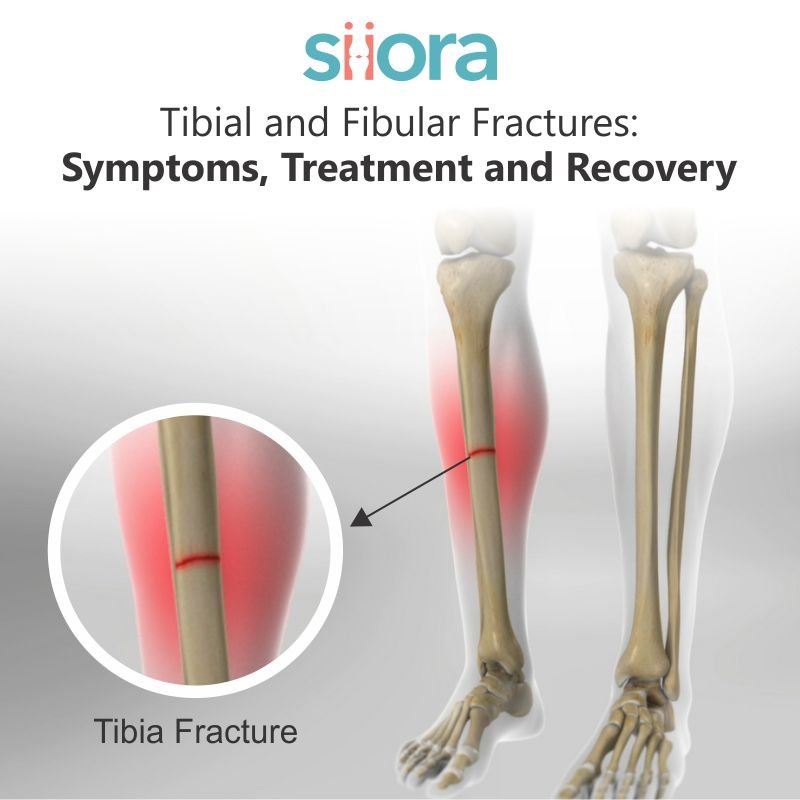When it comes to orthopedic surgery and bone fixation, the tools used can make all the difference. Among the many options available to surgeons, cortical and cancellous screws are two of the most commonly used types. Though they may seem similar at first glance, they are designed for very different purposes. Understanding the distinctions between these screws, as well as their appropriate applications, is crucial for ensuring successful outcomes in bone healing and repair.
In this blog, we’ll take a closer look at cortical and cancellous screws. You will read about down what they are, how they work, and when each type should be used. Whether you’re a medical professional or someone curious about orthopedic techniques, this guide will help clarify the differences in simple terms.
What Are Cortical Screws?
Cortical screws are designed specifically for use in dense bone, also known as cortical bone. This type of bone is found on the outer layer of most bones in the body and is characterized by its compact structure.
Key Features of Cortical Screws
- Thread Design: Cortical screws have fine threads that run along their entire length. These closely spaced threads allow the screw to achieve a strong grip in the dense cortical bone.
- Diameter: These screws typically have a smaller core diameter compared to cancellous screws. This enhances their strength and reduces the risk of bone damage during insertion.
- Material: Cortical screws are often made from stainless steel or titanium for durability and compatibility with the human body.
Common Uses
- Fixation of fractures in long bones like the femur, tibia, or humerus.
- Stabilization of locking plates used in orthopedic surgeries.
- Securing implants in areas where dense cortical bone provides sufficient support.
Cortical screws are ideal for areas where the bone is compact and strong, such as the shafts of long bones.
What Are Cancellous Screws?
Cancellous screws, on the other hand, are designed for use in spongy bone, also known as cancellous bone. This type of bone is found inside the ends of long bones and in the vertebrae. Cancellous bone has a porous structure, making it less dense but more flexible than cortical bone.
Key Features of Cancellous Screws
- Thread Design: Cancellous screws have coarser and deeper threads, which help them grip the softer cancellous bone effectively. Often, the threads are present only on a portion of the screw.
- Diameter: These screws have a larger core diameter, which provides greater surface area for engaging with the porous bone.
- Thread Length: Partial threads allow the screw’s head to compress bone fragments together, which is particularly useful in fracture healing.
Common Uses
- Fixation of fractures near the ends of long bones, such as in the femoral head or humeral head.
- Securing bone grafts in place.
- Providing stability in areas where cancellous bone is predominant.
Cancellous screws are designed to create a strong hold in softer, more flexible bone, making them essential in surgeries near joints and other cancellous-rich areas.
When to Use Cortical Screws?
Cortical screws are the go-to choice for surgeries involving dense bone. Here are some situations where they are commonly used:
- Fracture Fixation in Long Bones: When a fracture occurs along the shaft of a long bone like the femur or tibia, cortical screws are used to stabilize the fracture and allow proper healing.
- Plate Fixation: Plates are often used to bridge fractures or stabilize bone segments. Cortical screws secure these plates to the dense cortical bone.
- Orthopedic Implants: In surgeries involving joint replacements or other implants, cortical screws are used to anchor the hardware into dense bone.
When to Use Cancellous Screws?
Cancellous screws excel in situations where the bone is porous and less dense. Here are some common scenarios:
- Fractures Near Joints: These screws are ideal for fixing fractures near the ends of long bones, such as the femoral head or tibial plateau.
- Bone Grafting: When bone grafts are used to fill gaps or replace missing bone, cancellous screws are used to hold the grafts in place.
- Compression Across Fractures: The coarse threads and partial thread design of cancellous screws make them perfect for pulling bone fragments together, promoting faster healing.
Why the Right Screw Matters?
Using the appropriate type of screw is essential for successful orthopedic procedures. Here’s why:
- Bone Integrity: Using the wrong screw can compromise the integrity of the bone, potentially leading to further damage or delayed healing.
- Stability: The right screw ensures that the bone fragments or implants remain stable, allowing proper healing and reducing the risk of complications.
- Healing Efficiency: Proper fixation promotes better blood flow and minimizes movement at the fracture site, both of which are critical for bone healing.
Factors to Consider When Choosing a Screw
Selecting the right type of screw depends on several factors, including:
- Bone Density: Dense cortical bone requires cortical screws, while spongy cancellous bone is better suited for cancellous screws.
- Fracture Location: The location and type of fracture dictate which screw will provide the best fixation.
- Surgical Goals: Whether the goal is compression, stabilization, or implant fixation, the screw’s design plays a key role.
- Patient-Specific Factors: Factors like age, bone health, and the presence of conditions like osteoporosis can influence the choice of screw.
Conclusion
Cortical and cancellous screws may seem like small components in the grand scheme of orthopedic surgery, but their role is undeniably critical. Understanding the differences between these screws and their applications helps ensure successful surgical outcomes and faster patient recovery.
Cortical screws, with their fine threads and smaller diameter, are perfect for dense cortical bone, while cancellous screws, with their coarse threads and larger diameter, excel in spongy cancellous bone. By choosing the right screw for the right situation, surgeons can provide the stability and support necessary for effective bone healing.
Whether you’re a medical professional or just curious about how these tiny tools work, we hope this guide has clarified the essential differences between cortical and cancellous screws. After all, when it comes to orthopedic care, even the smallest details matter!








